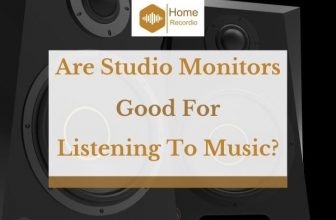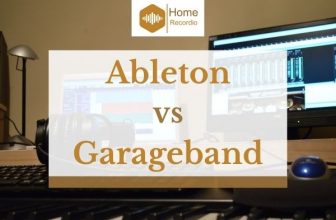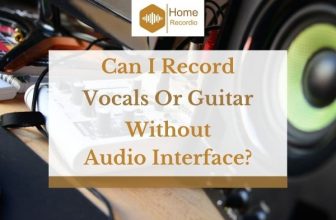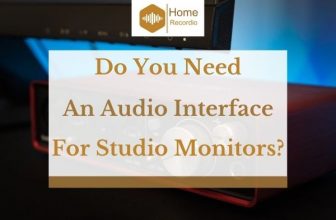Audio Interface vs Headphone Amp
According to the name of the audio interface, it can connect different audio sources to computers like guitar, keyboard, etc.
It can work both ways, i.e., it can easily convert analog signals to digital signals and vice versa.
The need for an audio interface arises when you have to record audios on your computer via microphones, guitars, etc.
They can also connect computers to your studio system. To produce a better quality of sound, the use of an audio interface is a must.
While headphone amplifiers are involved in balancing the impedance and can enhance the voltage of audio signals, it can be matched with the connected headphones in which audio signals have been sent.
As its name shows, they are designed to amplify the audio signals for better working of headphones.
To enhance the amplitude of audio signals so that the connected headphones can work with greater accuracy and power, headphone amplifiers are used.
[amazon table=”7121″]Table of Contents
What is an Audio Interface?
Video: “What Is An Audio Interface And What Do We Do With It?”
An audio interface is a type of hardware device that expands or enhances the sonic capacities of computers.
Some of them can connect different kinds of signals to a computer, which results, a variety of output signals.
Another function of the audio interface is that it can also improve sound quality and make it more accurate.
How does it work?
Audio interfaces are most commonly used at highly professional levels where audio performances are required. They are involved in routing different kinds of signals into and out of the computers.
When connected to computers, they act as the computer’s sound card. It is the main component of sound recording, as it records high-quality sounds.
It acts as a bridge between the computer and the recording equipment in your studio. If you want to create your music, you have to record it first and then listen to it for satisfaction; all this is managed by interface.
[amazon box=”B07QR6Z1JB”]What is a Headphone AMP?
Video: “Headphone Amplifiers: Explained”
Headphone amps are audio amplifiers that efficiently upgrade low-voltage audio signals coming from the source device.
They increase the levels of these low-voltage signals so that they are easily convertible. Then, the speakers in your headphones can easily convert them into sound waves.
Types of Headphone Amps
There are three common types of headphones amps
Portable
These are designed to fit in your pockets so that you can take them with you anywhere.
Desktop-Designed
For studios or on stage. They can have four to six outputs.
Rackmount
These are usually 19 inches and can fit into your studio rack. They can have multiple outputs.
Audio Interface vs Headphone Amp – The Differences
Now that we know what an audio interface and a headphone amp are, we should look into the differences.
An audio interface is a multipurpose device, but it is essential for better sound quality and connectivity. It is crucial for moving the audio in and out of the computer.
On the other hand, a headphone amp is merely for amplifying the audio to give a high-quality sound.
A headphone amp has to take signals and make it loud enough to be heard by using headphones.
An audio interface is a kind of box that records music, and it is useful for production. It is a device that can improve the sonic components of your computer.
It is excellent to look for something to enhance your recording using different instruments like guitar and microphone. An audio interface already contains a headphone amp and other components like DAC and ADC chips etc.
While an audio interface contains all these components, these components’ quality is not up to the mark. To keep the price of an audio interface as low as possible, they have to compromise on these components’ quality.
Do I need a external Headphone Amp for the Audio Interface?
Today in most cases, every cheap audio interface has a basic preamp already, but still, sometimes you need an external pre-amplifier. The reason is that a dedicated preamp is necessary if you want to get a better-quality sound.
If you didn’t add any external amp, then at a later point, you have to add it for some of the following advantages.
- An external amp can give a better quality of sound if you attach them with a low-quality audio interface. A high-quality external preamp provides more advanced circuitry that maintains full transparency even if they are steed on their highest peaks.
- If audio interfaces have built-in preamps, then they can give not more than 60 dB or sometimes less. But in low output dynamic mics, up to 70 dB or less is required.
- The main reason to add an external preamp is the special sound character.
- Most of the time, built-in preamps of audio interfaces can give a fairly clear sound, but if you add a unique flavor, then for better quality sound, you have to add an external preamp.
Conclusion
Whether you need a dedicated headphone amp or an audio interface depends upon your need.
Although an audio interface contains a built-in headphone amp, there are some situations when you cannot rely upon it.
If you are a professional and want to build a good, high-quality listening setup, just go for a dedicated headphone amp.
I hope this article helped you in finding a solution to your problem. I explained the differences; getting any of these is your choice. Happy recording!




